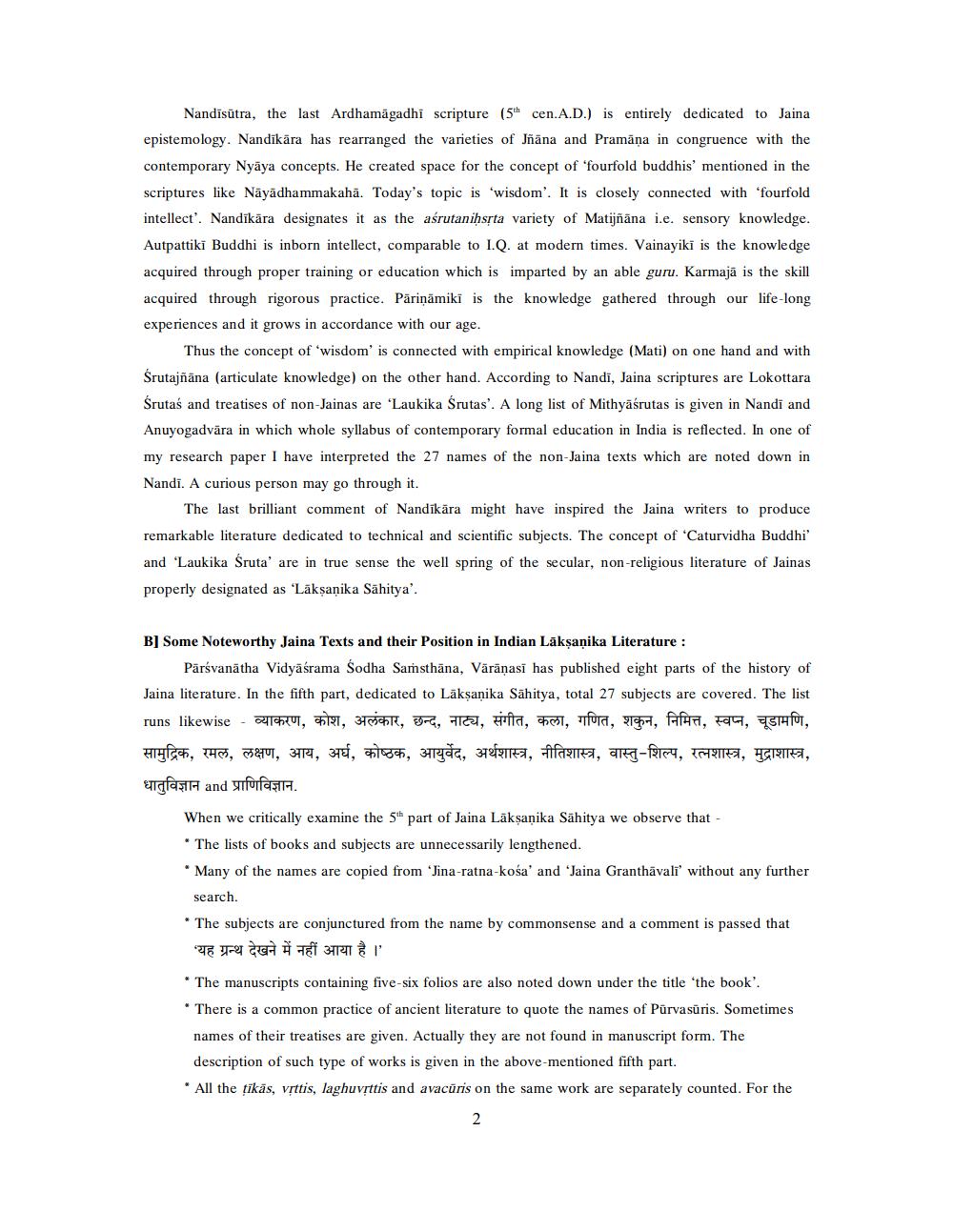Book Title: Wisdom in Jain Tradition Author(s): Nalini Joshi Publisher: Nalini Joshi View full book textPage 2
________________ Nandīsūtra, the last Ardhamāgadhi scripture (5th cen.A.D.) is entirely dedicated to Jaina epistemology. Nandikāra has rearranged the varieties of Jñāna and Pramāna in congruence with the contemporary Nyāya concepts. He created space for the concept of 'fourfold buddhis' mentioned in the scriptures like Nāyādhammakahā. Today's topic is 'wisdom'. It is closely connected with 'fourfold intellect'. Nandikära designates it as the aśrutanihssta variety of Matijñana i.e. sensory knowledge. Autpattiki Buddhi is inborn intellect, comparable to 1.Q. at modern times. Vainayiki is the knowledge acquired through proper training or education which is imparted by an able guru. Karmajā is the skill acquired through rigorous practice. Pāriņāmiki is the knowledge gathered through our life-long experiences and it grows in accordance with our age. Thus the concept of 'wisdom' is connected with empirical knowledge (Mati) on one hand and with Śrutajñāna (articulate knowledge) on the other hand. According to Nandi, Jaina scriptures are Lokottara Śrutas and treatises of non-Jainas are 'Laukika Śrutas'. A long list of Mithyāśrutas is given in Nandi and Anuyogadvära in which whole syllabus of contemporary formal education in India is reflected. In one of my research paper I have interpreted the 27 names of the non-Jaina texts which are noted down in Nandi. A curious person may go through it. The last brilliant comment of Nandikāra might have inspired the Jaina writers to produce remarkable literature dedicated to technical and scientific subjects. The concept of 'Caturvidha Buddhi' and 'Laukika Śruta' are in true sense the well spring of the secular, non-religious literature of Jainas properly designated as 'Läkșanika Sahitya'. B] Some Noteworthy Jaina Texts and their Position in Indian Lākṣaṇika Literature : Pārsvanātha Vidyāśrama Sodha Samsthāna, Vārāṇasi has published eight parts of the history of Jaina literature. In the fifth part, dedicated to Lākṣanika Sāhitya, total 27 subjects are covered. The list runs likewise - AUT, 121, 37chle59-G, HTT, Hista, tochtfora, 17, afta, 1947, 7514fot, Hryfach, H, 5441, 3474, 375, 1984, tras, 32 , ffage, ard-fary, 2A, GIE, धातुविज्ञान and प्राणिविज्ञान. When we critically examine the 5 part of Jaina Lākṣanika Sāhitya we observe that * The lists of books and subjects are unnecessarily lengthened. * Many of the names are copied from Jina-ratna-kośa' and 'Jaina Granthāvali' without any further search. * The subjects are conjunctured from the name by commonsense and a comment is passed that 'यह ग्रन्थ देखने में नहीं आया है।' * The manuscripts containing five-six folios are also noted down under the title 'the book'. * There is a common practice of ancient literature to quote the names of Purvasūris. Sometimes names of their treatises are given. Actually they are not found in manuscript form. The description of such type of works is given in the above-mentioned fifth part. * All the tīkās, vittis, laghuvittis and avacūris on the same work are separately counted. For thePage Navigation
1 2 3 4 5 6 7 8
